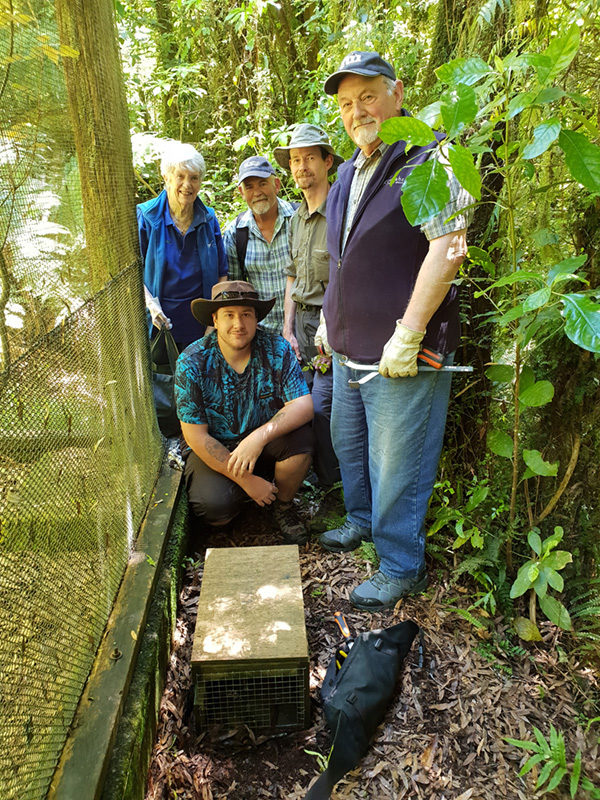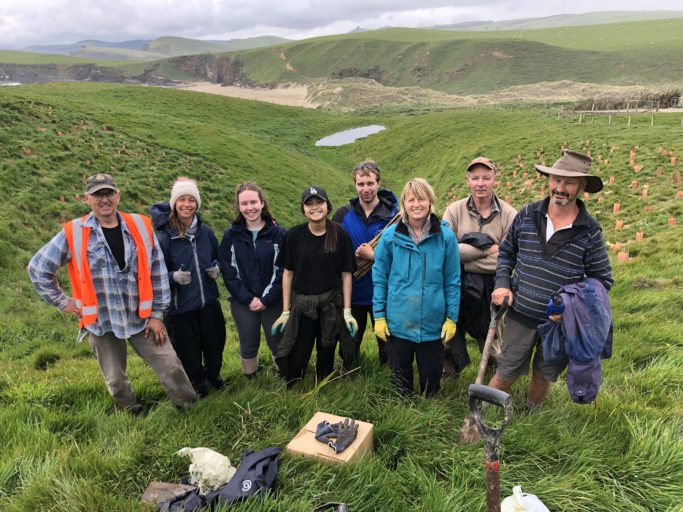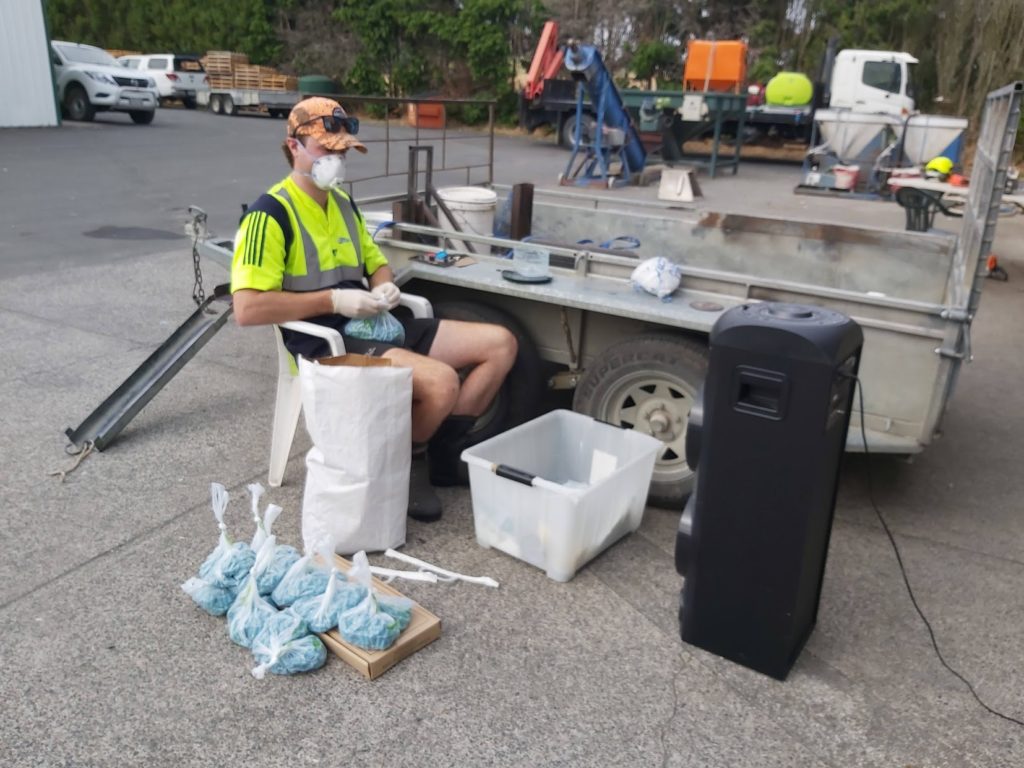ON THIS PAGE
Introduction
The level of risk for your group will depend on many variables including the type of work involved, the number of people, their level of experience, the terrain, weather conditions, and the type of equipment.
Group leaders as well as other staff, contractors and volunteers all have a responsibility to consider health and safety, for themselves and for those around them.
It’s important to note that if someone in your group has an accident, trustees or other group leaders may be held responsible and have to cover costs.
As well as physical health and safety guidance, this page also has information on including cultural and social awareness as part of your group’s induction process.
The advice below is intended as a guideline only; please refer to the links at the bottom of the page for more details.

What is the Health and Safety at Work Act 2015?
The Act states that ‘Persons Conducting a Business or Undertaking’ (PCBU) must provide the highest possible level of protection for workers when it comes to health and safety.
Governing officers and management personnel can be held personally liable if an accident occurs and appropriate actions to avoid and minimise incidents were not undertaken.
A formal written health and safety plan with an induction system for every project team member is the best way of ensuring everyone understands and takes individual responsibility for health and safety.

Because health and safety is a legal responsibility and the risks of not managing it properly could affect a project’s future, it’s worth investing in a professional consultant to develop your health and safety plan. That way, you will be confident that you have a robust and enduring formal system tailored to your specific project needs.
According to WorkSafe NZ, that means group leaders should:
- Identify hazards.
- Assess the risks.
- Manage the risks.
- Monitor control measures.
That includes:
- Having a knowledge of local risks and hazards (slippery terrain, poisonous plants, sharp rocks, etc.)
- Knowing what to do in an emergency – St John and NZ Red Cross run first aid courses around NZ
- Having a checklist for processes, e.g. ensuring everyone has the right gear and equipment
- Providing a health and safety briefing at the beginning of a work session
- Reviewing and reporting if an accident does happen (as an example Otago Peninsula Biodiversity Group, or OPBG, has an accident report template).
- Writing a Health and Safety Plan. This not only helps to protect staff, it ensures that your group has identified, recorded and prepared for any issues.
What do volunteers and staff need to know?
The number one thing to know is: don’t be complacent. Health and safety is everyone’s responsibility, including governing officers, management team, volunteers, contractors and landowners. Everyone should be aware of any risks and mindful at all times. Just because it hasn’t happened before, doesn’t mean it won’t happen this time.
Volunteers and/or paid staff should follow instructions given by their group leader, consider the risks involved, only do what feels safe, and use Personal Protective Equipment (PPE) as required. Review which tasks you carry out where PPE is either mandatory (e.g. when using vertebrate toxins) or highly recommended (e.g. wearing gloves when checking traps and removing carcasses).

They should also report any health and safety concerns to their group leader (OPBG also has a hazard identification report (PDF, 143KB)). A useful habit to get into is reporting near misses – incidents where no or minor injury occurs. Often these incidents point to issues that need to be resolved, e.g. more training or changing a way a task is performed to avoid a more serious incident. Make it an enjoyable task with a ‘no blame’ culture, but with a clearly-recorded process agreed on and communicated to everyone to learn from. This is a great way of showing that you value your people and are committed to them working and going home safely.
Potential hazards and risks to consider:
- Tools – are they sharp, loud, do they require support or supervision?
- Lifting and carrying – is the equipment heavy and likely to cause injuries?
- Traps – poor use can lead to serious and permanent injuries.
- Toxins – are volunteers allowed to handle toxic baits or poisonous sprays? If so, have you provided training?
- Weather – do workers have appropriate clothing and footwear, as well as sun protection, for the conditions?
- Children – are children allowed to accompany parent volunteers? Will they be adequately supervised?
- Space – do workers have enough room to carry out their work safely?
- Food and water – if the work is remote or ongoing, do workers have sufficient supplies?
- Terrain – is there uneven, steep ground or bodies of water to be aware of?
- Accidents – at least one of the group should have first aid training and carry a medical kit (OPBG has an inventory for first aid kits (PDF, 101KB))
- Getting lost – is the area clearly signposted or mapped? Is everyone carrying phones and is there a signal? Some conservation groups work with the Get Home Safe app or carry EPIRBS (personal locator beacons) – use your local knowledge to work out what is best for your project.
- Evacuation – in quake or flood-prone areas, an evacuation plan is crucial
- Numbers – if you have a lot of workers including new faces, get everyone to fill out a form with their details and always ensure they go through an initial, formally-recorded induction when they start and then regular health and safety refreshers.
Traps and baits
Most predator control groups will be working with traps and/or baits, so below is some safety advice related to those types of equipment.
Trap safety
Read our article about How to choose the right trap (includes links to demo videos for different types of traps).
Always wear gloves when handling catches. Dispose of catches by burying them in the garden or wrapping in paper and putting in the rubbish bin.
Working with toxic baits
For more information and an overview of toxic baits, read our read our introduction to bait stations guide.
- All baits should be secured in bait stations.
- Know your area, including which non-target species are at risk of secondary poisoning – e.g. people, dogs, livestock, and native birds such as weka.
- Read the product label carefully, as well as the manufacturer’s instructions and Safety Data Sheet. It is a legal requirement (to protect your own health and safety and that of others, and also to protect the environment) that you work to these documents and do not deviate from them.
- Use thick rubber or leather gloves when handling toxins, and also when handling traps and carcasses to avoid leptospirosis and other diseases. Gloves are also essential when dealing with live animals.

- Check that no toxins have spilled on the ground when refreshing bait. Remove any that have and dispose of them responsibly (read labels) offsite to avoid non-target effects, bait shyness and bioaccumulation.
- If poisoning is suspected, contact a vet/doctor immediately or call the National Poisons Centre on 0800 764 766 (0800 POISON).
- Check whether you need a Controlled Substance Licence (CSL) and any other approval prior to use. If unsure, contact the manufacturer or biosecurity department of your council or get a more experienced person to undertake the work or conduct training.
Cultural induction and awareness
As with an induction on physical health and safety, a cultural induction may also be needed.
A cultural induction can prevent or minimise impacts to cultural sites, landmarks, taonga and the mana whenua. This practice usually involves understanding the history of the area and the people, and can sometimes involve a karakia or blessing of the work and/or people involved.
As part of the cultural induction, encourage workers to be mindful that any predator control involves taking a life. While most people will be fine with this, discussion should be encouraged around the moral obligations of workers/volunteers so as not to desensitize them to the work and ensure a humane approach is taken.
A cultural induction should only be done by mana whenua who are properly trained in this practice.
Note: if sacred sites or artifacts are discovered while the work is underway, secure the site and report to Heritage NZ and the mana whenua as soon as possible.
Templates
The information provided in these documents is intended as a general guide or template. Modification or the incorporation of additional material may be required to accurately reflect the recipients’ operational systems and methods. Predator Free New Zealand Trust takes no liability for workplace health and safety as a result of utilising or adopting this material.
- Induction and training (DOC, 47KB)
- Fatigue management policy (DOC, 36KB)
- Hazard versus risk (DOC, 2MB)
- Risk consequence matrix (DOC, 33KB)
- Risk register (DOC, 51KB)
- Competency and training matrix (DOC, 30KB)
- Contractor management (DOC, 74KB)
- Incident register (DOC, 40KB)
- Worker induction record (DOC, 32KB)
- Utility vehicle and car inspection record (DOC, 34KB)
- Accident, incident, near-miss report & investigation record (DOC, 66KB)
- Chainsaw use (DOC, 64KB)
- Firearms use (DOC, 61KB)
- Hazardous and controlled substances (DOC, 63KB)
- Lone work (DOC, 50KB)
- Vehicle and plant inspection (DOC, 51KB)

